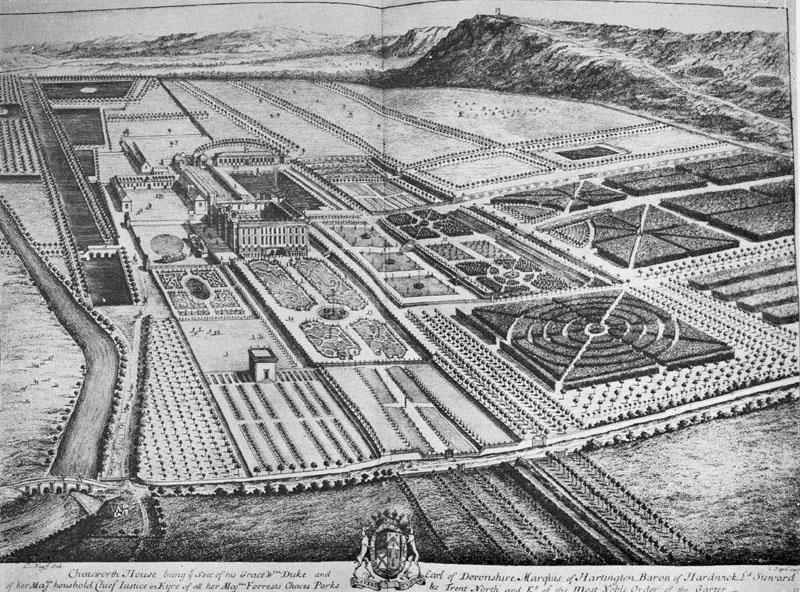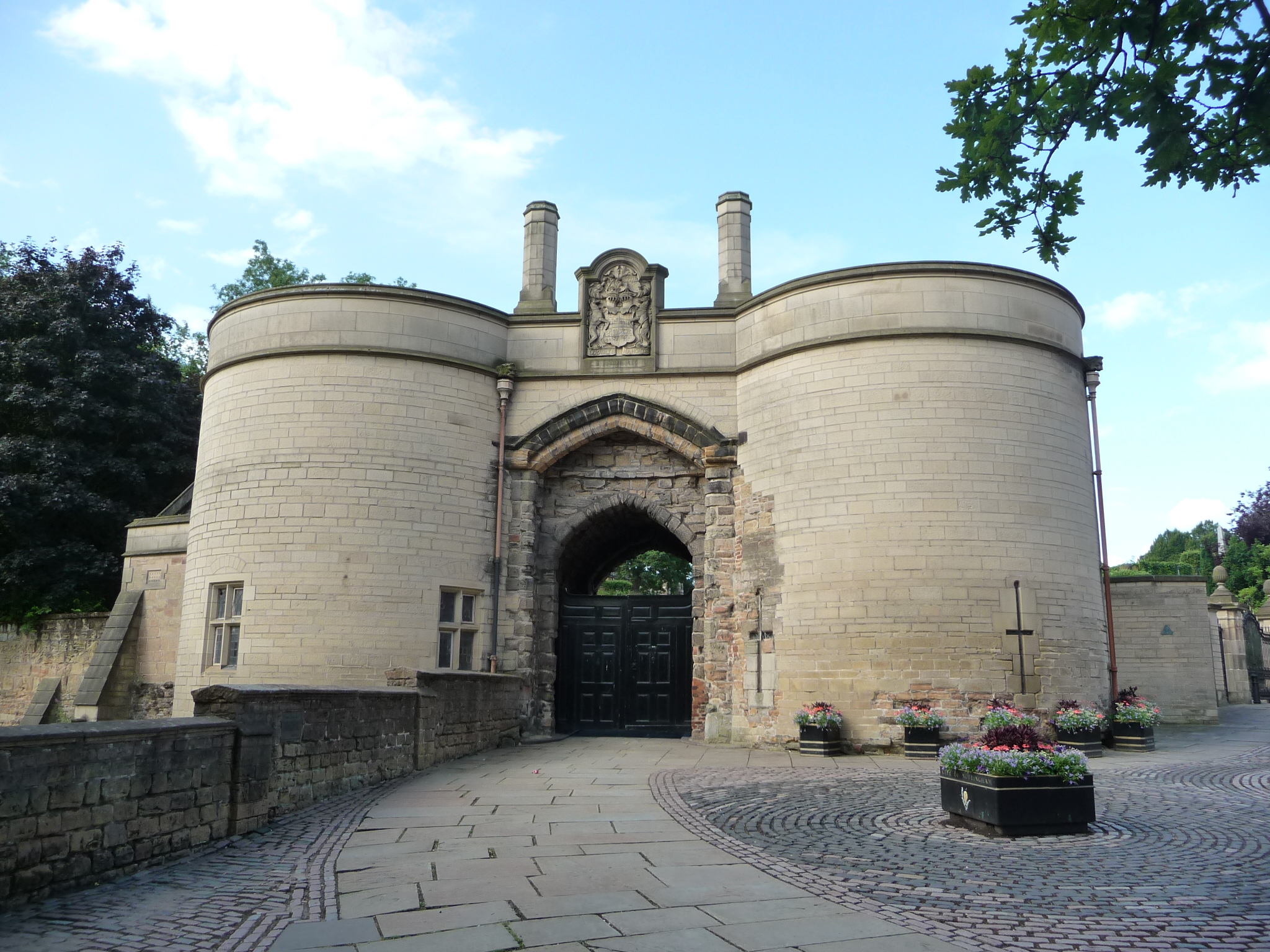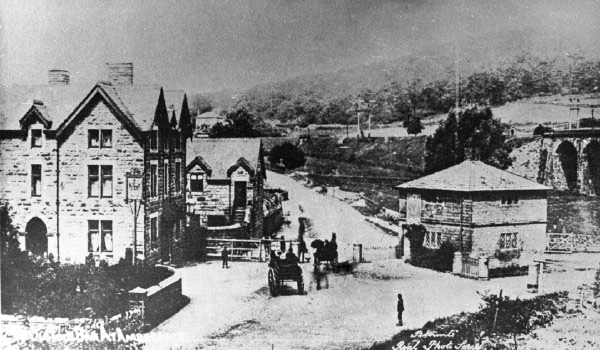|
Ladybower Reservoir
Ladybower Reservoir is a large Y-shaped, artificial reservoir, the lowest of three in the Upper Derwent Valley in Derbyshire, England. The River Ashop flows into the reservoir from the west; the River Derwent flows south, initially through Howden Reservoir, then Derwent Reservoir, and finally through Ladybower Reservoir. The reservoir is owned by the water company Severn Trent. The area is now a tourist attraction, with the Fairholmes visitors' centre located at the northern tip of Ladybower. The east arm of the reservoir, fed by the Ladybower Brook, is overlooked by Hordron Edge stone circle. Design and construction Ladybower was built between 1935 and 1943 by the Derwent Valley Water Board to supplement the other two reservoirs in supplying the water needs of the East Midlands. It took a further two years to fill, which was done by 1945. The dam differs from the Howden Reservoir and Derwent Reservoir in that it is a clay-cored earth embankment and not a solid masonry ... [...More Info...] [...Related Items...] OR: [Wikipedia] [Google] [Baidu] [Amazon] |
Upper Derwent Valley
The Upper Derwent Valley is an area of the Peak District National Park in England. It largely lies in Derbyshire, but its north eastern area lies in Sheffield, South Yorkshire. Its most significant features are the Derwent Dams, Ladybower, Derwent and Howden, which form Ladybower Reservoir, Derwent Reservoir and Howden Reservoir respectively. History In 1899, the Derwent Valley Water Board was set up to supply water to Derby, Leicester, Nottingham and Sheffield, and the two Gothic-style dams were built across the River Derwent to create Howden Reservoir (1912) and Derwent Reservoir (1916). West of the Derwent a large village known as Birchinlee, locally known as 'Tin Town', was created for the 'navvies'—the workers who built the dams—and their families, many of whom came from the Elan Valley Reservoirs in Wales. One of the buildings was salvaged and rebuilt at Hope where in 2014 it was reported to be housing a beauty parlour. The villages in the Upper Derwent Valley: ... [...More Info...] [...Related Items...] OR: [Wikipedia] [Google] [Baidu] [Amazon] |
Ladybower Reservoir
Ladybower Reservoir is a large Y-shaped, artificial reservoir, the lowest of three in the Upper Derwent Valley in Derbyshire, England. The River Ashop flows into the reservoir from the west; the River Derwent flows south, initially through Howden Reservoir, then Derwent Reservoir, and finally through Ladybower Reservoir. The reservoir is owned by the water company Severn Trent. The area is now a tourist attraction, with the Fairholmes visitors' centre located at the northern tip of Ladybower. The east arm of the reservoir, fed by the Ladybower Brook, is overlooked by Hordron Edge stone circle. Design and construction Ladybower was built between 1935 and 1943 by the Derwent Valley Water Board to supplement the other two reservoirs in supplying the water needs of the East Midlands. It took a further two years to fill, which was done by 1945. The dam differs from the Howden Reservoir and Derwent Reservoir in that it is a clay-cored earth embankment and not a solid masonry ... [...More Info...] [...Related Items...] OR: [Wikipedia] [Google] [Baidu] [Amazon] |
Ashopton
Ashopton was a small village in Derbyshire, England, in the valley of the River Ashop. The village population was less than 100. Details are included in the civil parish of Aston, Derbyshire. In the early 1940s, the village (along with neighbouring Derwent) was demolished to make way for the filling of Ladybower Reservoir. History The village was in the chapelry of Derwent. In 1829, Stephen Glover wrote that the village hosted a wool fair on 29 July; he suggested that this was intended to be a tradition continued annually on the last Wednesday of July. The village was located near where the Derwent Valley joins the Snake Valley (route of the current A57 Snake Pass to Glossop). There are several reminders of the village. One is in the name of the Ashopton Viaduct which carries the A57 across the mouth of the Derwent Valley. The main part of the village was immediately south of the viaduct. Other reminders of the village include Ashopton Sawmill and Ashopton Cottag ... [...More Info...] [...Related Items...] OR: [Wikipedia] [Google] [Baidu] [Amazon] |
Church Tower At Ladybower Reservoir
Church may refer to: Religion * Church (building), a place/building for Christian religious activities and praying * Church (congregation), a local congregation of a Christian denomination * Church service, a formalized period of Christian communal worship * Christian denomination, a Christian organization with distinct doctrine and practice * Christian Church, either the collective body of all Christian believers, or early Christianity Places United Kingdom * Church, a former electoral ward of Kensington and Chelsea London Borough Council that existed from 1964 to 2002 * Church (Liverpool ward), a Liverpool City Council ward * Church (Reading ward), a Reading Borough Council ward * Church (Sefton ward), a Metropolitan Borough of Sefton ward * Church, Lancashire, England United States * Church, Iowa, an unincorporated community * Church Lake, a lake in Minnesota * Church, Michigan, ghost town Arts, entertainment, and media * '' Church magazine'', a pastoral theology magazin ... [...More Info...] [...Related Items...] OR: [Wikipedia] [Google] [Baidu] [Amazon] |
Rivelin Dams
Rivelin Dams are a pair of water storage reservoirs situated in the upper part of the Rivelin Valley, west of Sheffield in South Yorkshire, England. The dams are owned by Yorkshire Water and provide water to 319,000 peopleTrenchless International.com. 319,000 people supplied by Rivelin system. as well as compensation water for the River Rivelin. They are named Upper and Lower and fall just within the eastern boundary of the Peak District. Description The Lower reservoir is the larger of the two and has easier public access with a tarmac road giving vehicular access to a small car park at the southern end of the dam wall. Access to the Upper reservoir and the woodland around it is by permit, there is a track with a locked gate which gives acc ...[...More Info...] [...Related Items...] OR: [Wikipedia] [Google] [Baidu] [Amazon] |
Chatsworth House
Chatsworth House is a stately home in the Derbyshire Dales, north-east of Bakewell and west of Chesterfield, Derbyshire, Chesterfield, England. The seat of the Duke of Devonshire, it has belonged to the House of Cavendish, Cavendish family since 1549. It stands on the east bank of the River Derwent, Derbyshire, River Derwent, across from hills between the Derwent and River Wye, Derbyshire, Wye valleys, amid parkland backed by wooded hills that rise to Moorland, heather moorland. The house holds major collections of paintings, furniture, Old Master drawings, neoclassical sculptures and books. Chosen several times as Britain's favourite country house, it is a Grade I listed property from the 17th century, altered in the 18th and 19th centuries. In 2011–2012 it underwent a £14-million restoration. The owner is the Chatsworth House Trust, an independent charitable foundation formed in 1981, on behalf of the Cavendish family. History 11th–16th centuries The name 'Chatsworth ... [...More Info...] [...Related Items...] OR: [Wikipedia] [Google] [Baidu] [Amazon] |
Leicester
Leicester ( ) is a city status in the United Kingdom, city, Unitary authorities of England, unitary authority area, and the county town of Leicestershire in the East Midlands of England. It is the largest city in the East Midlands with a population of in . The greater Leicester urban area had a population of 559,017 in 2021, making it the 11th most populous in England, and the List of urban areas in the United Kingdom, 13th most populous in the United Kingdom. A 2023 report ranked Leicester 16th out of the 50 largest UK cities on a range of economic measures, and the first of seven East Midlands cities. The city lies on the River Soar and is approximately north-northwest of London, east-northeast of Birmingham and northeast of Coventry. Nottingham and Derby lie around to the north and northwest respectively, whilst Peterborough is located to the east. Leicester is close to the eastern end of the National Forest, England, National Forest. Leicester has a long history exten ... [...More Info...] [...Related Items...] OR: [Wikipedia] [Google] [Baidu] [Amazon] |
Derby
Derby ( ) is a City status in the United Kingdom, city and Unitary authorities of England, unitary authority area on the River Derwent, Derbyshire, River Derwent in Derbyshire, England. Derbyshire is named after Derby, which was its original county town. As a unitary authority, Derby is administratively independent from Derbyshire County Council. The population of Derby is (). The Romans established the town of Derventio Coritanorum, Derventio, which was later captured by the Anglo-Saxons and then by the Vikings who made one of the Five Boroughs of the Danelaw. Initially a market town, Derby grew rapidly in the industrial era and was home to Lombe's Mill, an early British factory and it contains the southern part of the Derwent Valley Mills World Heritage Site. With the arrival of the railways in the 19th century, Derby became a centre of the Rail transport in Great Britain, British rail industry. Despite having a Derby Cathedral, cathedral since 1927, Derby did not gain City ... [...More Info...] [...Related Items...] OR: [Wikipedia] [Google] [Baidu] [Amazon] |
Nottingham
Nottingham ( , East Midlands English, locally ) is a City status in the United Kingdom, city and Unitary authorities of England, unitary authority area in Nottinghamshire, East Midlands, England. It is located south-east of Sheffield and north-east of Birmingham. Nottingham is the legendary home of Robin Hood and to the lace-making, bicycle and Smoking in the United Kingdom, tobacco industries. The city is also the county town of Nottinghamshire and the settlement was granted its city charter in 1897, as part of Queen Victoria's Diamond Jubilee celebrations. In the 2021 United Kingdom census, 2021 Census, Nottingham had a reported population of 323,632. The wider conurbation, which includes many of the city's suburbs, has a population of 768,638. It is the largest urban area in the East Midlands and the second-largest in the Midlands. Its Functional Urban Area, the largest in the East Midlands, has a population of 919,484. The population of the Nottingham/Derby metropolitan a ... [...More Info...] [...Related Items...] OR: [Wikipedia] [Google] [Baidu] [Amazon] |
Ambergate
Ambergate () is a village in Derbyshire, England, situated where the River Amber joins the River Derwent, Derbyshire, River Derwent. It is about south of Matlock, Derbyshire, Matlock. The village forms part of the Heage and Ambergate ward of Ripley Town Council with a population of 5,013 at the 2011 Census. Ambergate is within the Derwent Valley Mills UNESCO World Heritage site, and has historical connections with George Stephenson, and is notable for its railway heritage and telephone exchange. The village also hosts an annual carnival. The A610 road from Ripley, Derbyshire, Ripley and Nottingham joins the A6 road (England), A6 trunk road at Ambergate as it runs north to south along the Derwent valley between Matlock, Derbyshire, Matlock and Derby. Neighbouring hamlets are Sawmills and Ridgeway. Alderwasley, Heage (the site of Heage Windmill), Nether Heage and Crich are other significant neighbouring settlements. Shining Cliff Woods, Derbyshire, Shining Cliff woods, Thacker' ... [...More Info...] [...Related Items...] OR: [Wikipedia] [Google] [Baidu] [Amazon] |
Bamford
Bamford is a village in the Peak District, Derbyshire, England, close to the Derwent Reservoir (Derbyshire), River Derwent. To the north-east is Bamford Edge, and to the north-west the Ladybower Reservoir, Ladybower, Derwent Reservoir (Derbyshire), Derwent and Howden Reservoirs. At the 2011 United Kingdom census, 2011 census, it had a population of 1,241. History Its name is recorded in the Domesday Book as ''Banford'', and likely came from Old English, Anglo-Saxon ''Bēamford'' = "tree-trunk Ford (crossing), ford". The St John the Baptist's Church, Bamford, parish church of St John the Baptist was built c. 1860. There is also the Bamford Methodist Church and Catholic Church, Catholic churches in the village, most notable of which is Our Lady of Sorrows Church, Bamford, Our Lady of Sorrows Church. The village graveyard also contains some re-interred graves from the nearby villages of Derwent, Derbyshire, Derwent and Ashopton which were submerged following the creation of Ladybo ... [...More Info...] [...Related Items...] OR: [Wikipedia] [Google] [Baidu] [Amazon] |
Hydroelectricity
Hydroelectricity, or hydroelectric power, is Electricity generation, electricity generated from hydropower (water power). Hydropower supplies 15% of the world's electricity, almost 4,210 TWh in 2023, which is more than all other Renewable energy, renewable sources combined and also more than nuclear power. Hydropower can provide large amounts of Low-carbon power, low-carbon electricity on demand, making it a key element for creating secure and clean electricity supply systems. A hydroelectric power station that has a dam and reservoir is a flexible source, since the amount of electricity produced can be increased or decreased in seconds or minutes in response to varying electricity demand. Once a hydroelectric complex is constructed, it produces no direct waste, and almost always emits considerably less greenhouse gas than fossil fuel-powered energy plants. [...More Info...] [...Related Items...] OR: [Wikipedia] [Google] [Baidu] [Amazon] |









